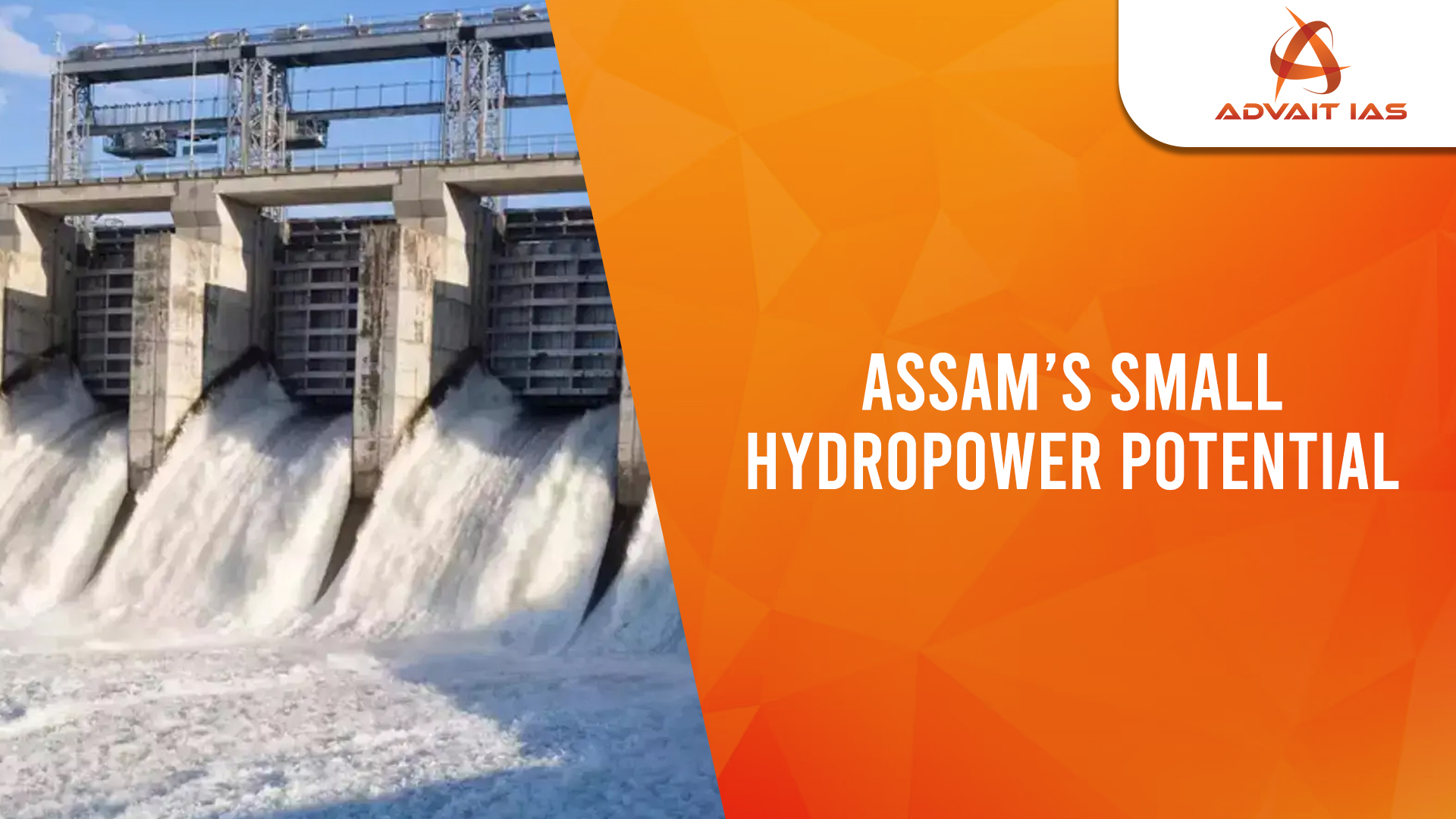Assam, known as the gateway to Northeast India, has abundant water resources.
- The Brahmaputra River and its tributaries offer significant potential for small hydropower generation.
- Despite this, Assam remains underutilized in hydropower, facing multiple challenges.
Small hydro power plants in India are those with a capacity of 25 MW or less.
Assam’s Rising Electricity Demand
- 2016: Peak demand 1,400 MW → 2023: 2,500 MW → 2026 (Projected): 4,000 MW.
- Assam faces a power deficit (4.4% in October 2024) and depends on power imports, making it vulnerable to supply disruptions.
- Small hydropower can bridge the energy gap and enhance energy independence.
Small Hydropower Potential in Assam
- Assam’s hilly terrain and river systems have an estimated 500 MW of small hydropower potential.
- 88 identified sites have a combined potential of 117 MW, but very few projects have been developed.
- Rivers like Dhansiri, Ranganadi, and Kopili, along with Karbi Anglong and North Cachar Hills, are suitable for small and micro hydropower projects.
Advantages of Small Hydropower
- Cost-effective and eco-friendly, compared to large dams.
- Localized power generation for rural and remote areas.
- Reduces dependency on fossil fuels, contributing to Assam’s energy security.
- Lower environmental and social impact than large hydro projects.
Challenges in Assam’s Hydropower Sector
- High sediment load in rivers reduces turbine efficiency.
- Land acquisition issues and lack of adequate policy support.
- Seismic risks as Assam lies in Earthquake Zone V.
- Limited private investment due to high upfront costs.
Lessons from Norway’s Success
- Norway generates 95% of its electricity from hydropower, with over 1,769 hydro plants (total capacity: 33,691 MW).
- Over 800 small hydropower plants contribute significantly to its energy mix.
- Key strategies Assam can adopt:
- Clear policy frameworks and financial incentives to attract private investment.
- Advanced sediment management techniques and quake-resistant infrastructure.
- Community participation in hydropower projects for sustainability.
Opportunities for Hydropower Development
- Developing projects on rivers like Dhansiri, Ranganadi, and Kopili can generate localized power.
- Micro-hydro systems can electrify remote villages and boost rural socio-economic development.
- Technological innovations:
- Sediment-resistant turbines to improve plant efficiency.
- Seismic-resilient designs for safety.
- Government support needed:
- Subsidies, tax incentives, and low-interest loans for small hydro projects.
- Simplified regulations for faster approvals.
- Public-Private Partnerships (PPP) to bring in investment and expertise.
- Cross-border collaboration with Bhutan for hydropower development and energy exports.
Challenges to Overcome
- Environmental concerns: Hydropower projects may affect river ecosystems and fish migration.
- Flood risks: Poorly planned projects may worsen monsoon flooding.
- Land acquisition and displacement remain contentious issues.
- High capital investment required for small hydro projects.
Way Forward
- Comprehensive site selection studies to minimize environmental impact.
- Dedicated hydropower development agencies to streamline project implementation.
- Technology adoption from Norway and other global leaders.
- Community engagement to ensure local participation and benefit-sharing.
- Diversifying energy sources to reduce dependence on fossil fuels.
Assam’s vast river network provides a unique opportunity to harness small hydropower for sustainable development.
Small hydropower can serve as a reliable green energy source, aid in flood control, rural electrification, and economic growth.
With strong policies, investments, and local participation, Assam can become a model for sustainable energy development in Northeast India.






